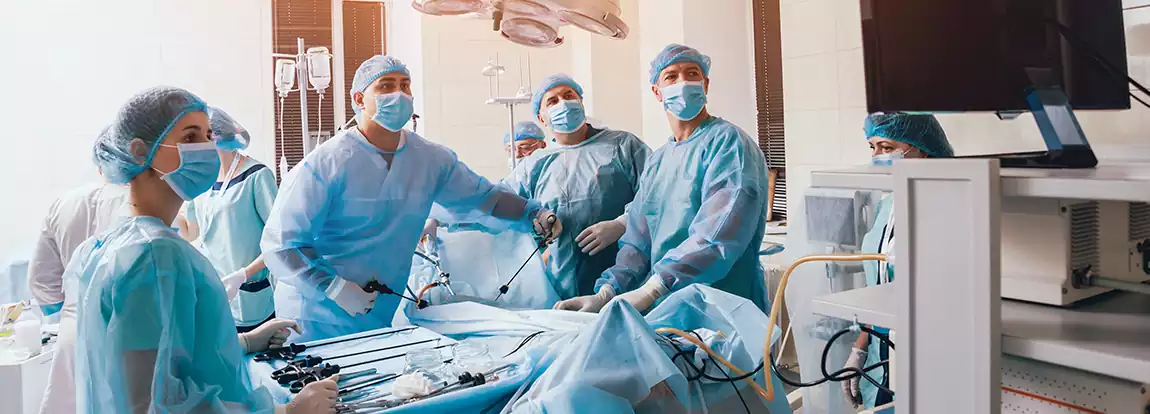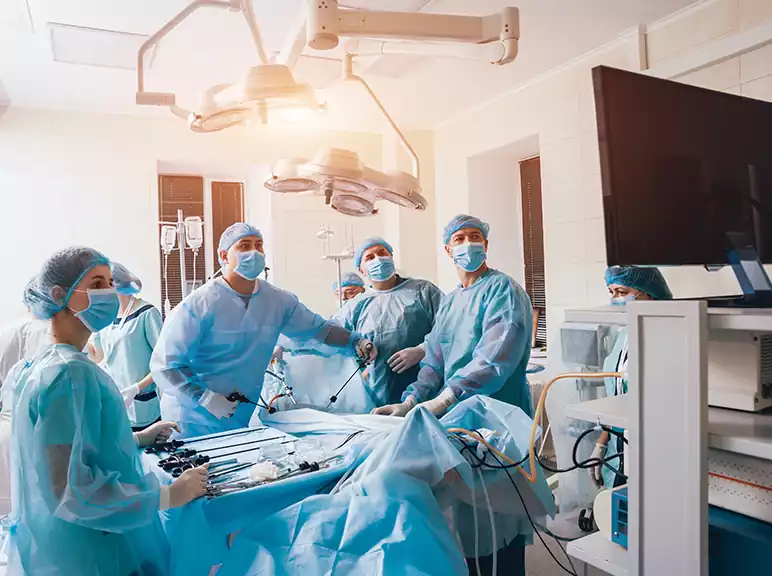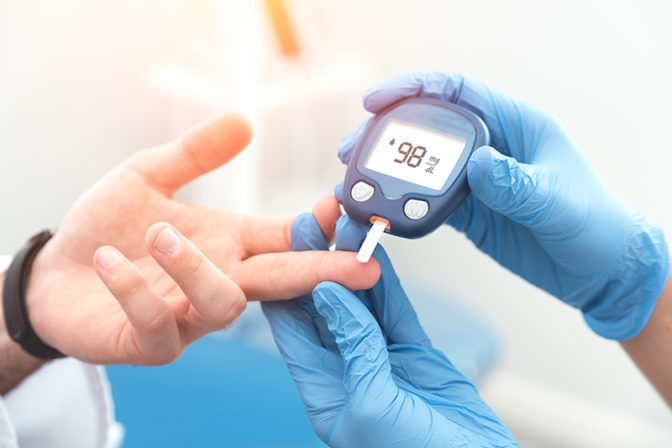Laparoscopic Gynaecology surgery
Laparoscopy is a surgical procedure which allows a surgeon to access the inside of the abdomen and pelvis without making big incisions(cuts) in the skin. This procedure is also called keyhole surgery or minimally invasive surgery or keyhole surgery. The surgeon uses an instrument known as a laparoscope which does not require the surgeon to make large incisions. It comprises of a small tube that has a light and a camera, which displays images of the pelvis or abdomen to a monitor. The benefits of this technique over traditional open surgery are:
- short hospital stays and quicker recovery time
- less bleeding and pain after the operation
- Less scarring
When laparoscopy is used
Laparoscopy can be used to diagnose many conditions that develop inside the abdomen or pelvis. It can be used to carry out surgical procedures, such as removal of the diseased or damaged organ, or removal of a tissue sample for further biopsy (testing). Laparoscopy is most commonly used in:
- gynaecology – the study and treatment of problems affecting the female reproductive system
- gastroenterology – the study and treatment of problems affecting the digestive system
- urology – the study and treatment of problems affecting the urinary system
Laparoscopy is used to diagnose or treat many conditions.
During the procedure, small surgical devices and instruments are inserted through small incisions. It helps the surgeon perform the required surgical procedure.
Diagnosing conditions
It’s possible to diagnose a condition using non-invasive methods, such as an ultrasound scan, magnetic resonance imaging (MRI) scan, computerised tomography (CT) scan. Sometimes, the only option to confirm a diagnosis is to study the affected area using a laparoscope directly.
Laparoscopies are now widely used to diagnose different conditions and investigate specific symptoms. For example, they can be used for:
- pelvic inflammatory disease (PID) – a bacterial infection of the female upper genital tract that includes the womb, ovaries and fallopian tubes
- endometriosis – tiny pieces of the womb lining (the endometrium) are found outside the womb
- ectopic pregnancy – a pregnancy which develops outside the womb
- ovarian cyst – a fluid-filled sac which develops on a woman’s ovary
- fibroids – non-cancerous tumours which grow around or in the womb (uterus)
- female infertility
- undescended testicles –A childhood condition in which a boy is born without either of the testicles in the scrotum
- appendicitis – a swelling of the appendix (a small pouch connected to the large intestine) that is accompanied by pain
- unexplained pelvic or abdominal pain
Laparoscopy can also be used to detect certain types of cancers. The laparoscope helps to obtain a sample of suspected cancerous tissue for testing at a laboratory. This procedure is known as a biopsy.
Cancers which can be diagnosed using laparoscopy include:
- liver cancer
- ovarian cancer
- pancreatic cancer
- cancer of the gallbladder
- cancer of the bile duct
Treating conditions
Laparoscopic surgery can be used to treat many different conditions, including:
- removing an inflamed appendix – in cases of appendicitis when there’s a high risk of bursting of the appendix
- removing the gallbladder – usually used to treat gallstones
- removing a part of the intestine – often used to treat digestive diseases, such as Diverticulitis or Crohn’s disease, that do not respond to medication
- repairing hernias – like those found in the groin
- repairing bleeding or burst stomach ulcers
- performing weight loss surgery
- removing some or the whole organ affected by cancer like the liver, colon, kidney, bladder, ovaries or prostate
- treating ectopic pregnancy – it’s often necessary to remove the embryo to prevent damage in the fallopian tubes
- removal of fibroids
- hysterectomy (removing the womb) – sometimes used to treat pelvic inflammatory disease (PID), endometriosis, heavy periods or painful periods
How laparoscopy is carried out
Laparoscopy is conducted under a general anaesthetic so that the person will not feel any pain during the procedure. Small incisions are made in the abdomen during laparoscopy. These allow the surgeon to insert a laparoscope, a small surgical tool, and a tube used to pump gas into the abdomen. This instrument helps the surgeon to look around and to operate. After the procedure, the gas is removed from your abdomen, the incisions are then stitched, and the dressing is applied. The patients often go home on the same day as the laparoscopy, although they may need to stay overnight in the hospital.
Safety
Laparoscopy is a common procedure, and serious complications are infrequent.
Minor complications
It is estimated that minor complications occur in 1 or 2 of every 100 cases after laparoscopy. They include:
- infection
- minor bruising and bleeding around the incision
- feeling ill and vomiting
Serious complications
Severe complications after laparoscopy are estimated to occur in 1 out of every 1,000 cases. They include:
- Damage to the organ, such as the intestine or the bladder, which may result in organ function loss.
- Damage to the main artery
- Complications resulting from the use of carbon dioxide during the procedure, such as gas bubbles entering the arteries or veins
- Severe allergic reaction to general anaesthetics
- A blood clot which develops in a vein, usually in one of the legs (deep vein thrombosis or DVT), which may break down and block the flow of blood in either of the blood vessels inside the lungs (pulmonary embolism)








